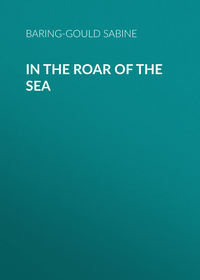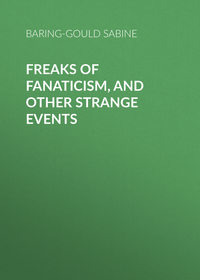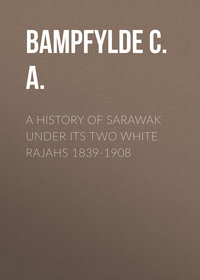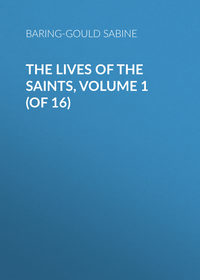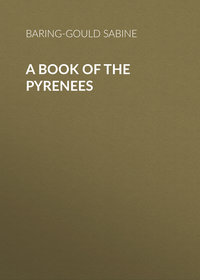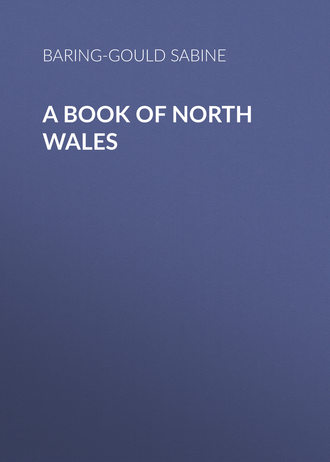 полная версия
полная версияA Book of North Wales
As everyone has heard of the beauties of Llangollen, so has everyone heard of its old maids. These were Lady Eleanor Butler, sister of John Earl of Ormonde, and Miss Sarah Ponsonby, daughter of Chambre Brabazon Ponsonby, Esquire, grandson of the first Lord Bessborough. They had been friends from early girlhood, and their tastes coincided. Both loved quietude, and neither felt any vocation for the married life. Many and brilliant offers had been made to Lady Eleanor, but she rejected every suitor, and in 1779 induced her friend to retire with her to Llangollen, and there they spent the rest of their lives – full half a century. They protested that not once for thirty hours successively had they quitted their peaceful retreat since they entered it.
Miss Seward describes this house as it was during their lives: —
“It consists of four apartments – a kitchen, the lightsome little dining-room, the drawing-room, and library.
“This room (the parlour) is fitted up in the Gothic style, the door and large sash-windows of that form, and the latter of painted glass. Candles are seldom admitted into this apartment. The ingenious friends have invented a prismatic lantern, which occupies the whole elliptic arch of the Gothic door. The lantern is of cut glass, variously coloured, enclosing two lamps. The light it imparts resembles that of a volcano, sanguine and solemn. It is assisted by two glow-worm lamps that, in little marble reservoirs, stand on the chimney-piece. A large Æolian harp is fixed in one of the windows, and when the weather permits them to be opened, it breathes its deep tones to the gale, swelling and softening as that rises and falls.
“This saloon of the Minervas contains the finest editions, superbly bound, of the best authors; over them the portraits in miniature, and some in larger ovals, of their favoured friends. The kitchen garden is neatness itself. The fruit trees are all of the rarest and finest sort, and luxuriant in their produce.”
She further describes their personal appearance: —
“Lady Eleanor is of middle height, and somewhat beyond the embonpoint as to plumpness; the face round and fair, with the glow of luxuriant health. She has not fine features, but they are agreeable; enthusiasm in her eye, hilarity and benevolence in her smile. Miss Ponsonby, somewhat taller than her friend, is neither slender nor otherwise, but very graceful. A face rather long than round, a complexion clear, but without bloom, with a countenance which, from its soft melancholy, has peculiar interest.”
Now compare this with the description given by Charles Mathews: —
“Oh! such curiosities! I was nearly convulsed. I could scarcely get on for the first ten minutes after my eye caught them. As they are seated there is not one point to distinguish them from men: the dressing and powdering of the hair; their well-starched neck-cloths; the upper part of their habits, which they always wear even at a dinner party, made precisely like men’s coats; and regular beaver black hats. They looked exactly like two respectable superannuated old clergymen.”
They were a century before their time. The lamp so admired, with its rosy light “like a volcano,” is now in every drawing-room; and as to the dressing like men! – why, every girl now tries to rig herself out like them and ape them in everything, even in bad manners.
Llangollen Church has been much altered by rebuilding, but it retains some points of interest. The south aisle and chancel are new, but the very fine roof has been retained, supposed to have been brought at the Dissolution from Vale Crucis Abbey.
This abbey may possibly take its name from the pillar stone of Eliseg that still stands after the abbey has been broken down. But the stone itself has suffered. Originally it was twelve feet high; now it is broken in half, and what remains is but a little over six feet in height. It bears an inscription testifying that it was set up by one Cyngen in memory of his great-grandfather Eliseg, a descendant of Brochwel, king of Powys.
The abbey was never very large. It was founded in 1200 by Madog ab Gruffydd Maelor, prince of Powys, and the remains of the church belong to the period when founded, or are but little subsequent.
The church was exquisitely beautiful, and in the dearth of really fine architectural specimens in Wales it is to be deeply deplored that it was wrecked. The west end has in it three double-light windows, with cusped circles enclosed within the arch, and below them is a beautiful doorway.
Some of the domestic offices remain, and in one of these is a Decorated window of rich and original design. Three lights filled in with flamboyant tracery are surmounted most strangely by bold, uncusped tracery richly sculptured with foliage.
Plas Eliseg is one of those delightful old timber-and-plaster houses of which there are so many, and all so charming and so peculiarly English, in Shropshire and Montgomeryshire; it is a gem of its style and quite unspoiled, in an exquisite situation, and rich with oak panelling and ancient furniture. It contains Lely’s portrait of Cromwell, mole and all, as well as one of his mother. The house belonged to Colonel Jones, the regicide, who was executed at the Restoration; it has passed out of the possession of his descendants.
The place has earlier associations. Hither Owen ab Cadwgan, a wild blood of the twelfth century, carried off the Helen of Wales, Nest, daughter of Rhys ab Tewdwr. Her story is worth recording.
Cadwgan was king of Powys and lord of Ceredigion. His son Owen “possessed the best and the worst characteristics of the Cymric princely families.” On Christmas, 1108, Cadwgan held a great eisteddfod at Cardigan, to which he invited all the kings, princes, and chiefs of the three kingdoms of Wales. To this gathering came Nest, daughter of Rhys, king of Deheubarth, who had been sent as a child as hostage to the English court, and Henry I. had basely taken advantage of her unprotected position to seduce her. He, however, quickly married her to Gerald of Windsor, whom he appointed Governor of Dyfed, with his residence at Pembroke. She was an extraordinarily beautiful woman, and Owen, son of Cadwgan, seeing her at his father’s court, fell desperately in love with her.
Assembling some wild fellows, he went with them to Pembroke, attacked the castle and set it on fire. Gerald had only time to escape by a drain, and so save himself, but Nest and his two children were taken by Owen, who carried them off to Plas Eliseg. This created a great commotion. King Cadwgan, fearing for the consequences, went promptly to his son and commanded him to restore at once the fair Nest to her husband. But the turbulent and enamoured Owen refused to give back the lady, and only reluctantly returned the children to their father.
This outrage was the occasion of civil war. Gerald of Windsor, with his followers, raged against the Welsh, destroying all around them with fire and sword. Two uncles of Owen, Ithel and Madog, were goaded on by the unscrupulous Bishop of London to take up arms and kill or capture Owen and his father, the king of Powys, who was guiltless of connivance in the abduction of Nest. Two other Welsh princes associated themselves with Ithel and Madog, urged by revenge, as Owen had killed their brothers; and these foes solemnly vowed to bring Owen and his father, alive or dead, to the bishop, who was at Shrewsbury. They marched into Ceredigion, laying waste the country as they went, and unless the inhabitants had been forewarned all would have been butchered. The day before these blood-thirsty human hunters reached the coast Owen had fled to Ireland, and Ceredigion was devastated, every house and church burnt, and every human being come across was massacred.
Cadwgan appealed to King Henry, protesting his innocence, and at last the English king consented to allow him to return to desolated Ceredigion, but exacted from him a fine; however, he allowed Ithel and Madog to keep possession of Powys.
Owen, hearing that his father had made peace with King Henry, returned from Ireland, but his father refused to see him. Owen went off into Powys and managed to patch up a reconciliation with Madog, who had lately sought his life as the murderer of his brothers. The recent enemies met and swore a solemn oath of perpetual friendship and of united hostility to the King of England. Owen, with a party of ruffians who had come with him from Ireland, now entered his father’s territories in Ceredigion, and thence made a series of marauding visits into Dyfed, using for the purpose the ships in which he had crossed from Ireland. In one of these he killed a Bishop William of the Flemings, who was on his way to the English court. The news reached King Henry whilst Cadwgan was with him on some business connected with the settlement of Welsh affairs. The King, exasperated to the last degree, bitterly reproached Cadwgan for not restraining this wild son of his, and at once despatched troops to chastise Owen, who immediately fled to Ireland.
Cadwgan was suffered to return to Powys, but was there assassinated by Madog, his son’s ally, who at once hastened to announce the news to the Bishop of London, and was received with favour.
Owen hurried back from Ireland; Madog was caught in an ambush, and Owen put out his eyes with red-hot irons.
Curiously enough, now King Henry received Owen into his favour, and took him as a companion to Normandy, where he acquitted himself gallantly, and was knighted by the King. On his return to England Henry sent him into Wales with a commission and promises of favour and assurances of confidence. But Gerald of Windsor was awaiting his opportunity. Owen on entering Wales began to butcher and burn with the utmost barbarity, and some peasants who escaped informed Gerald as to his whereabouts. Gerald hastened to intercept him, surrounded him, and Owen was pierced to the heart with an arrow.
A run of half an hour by train takes us to Corwen, a dingy little town at the junction of the line to Ruthin and Rhyl. Lying under steep mountains to the south, it comes off scantily for sun in winter.
Here the church has been rebuilt in very bad taste, with hideous plate-tracery in the windows, and a cumbrous French “Gothic” arcade within. The English and French architects of the Middle Ages started with different conceptions as to how to deal with the arch and the capital of the pillar on which it rested. The Frenchman made of his arch a hole bored in slabs of stone with sharp angles. If he had to sustain it on a circular drum of a pillar, he accommodated the capital to the arch by taking the Ionic crown as his type and reproducing the horns at the corners which serve as supports to the four angles of the arch resting on it.
But the English architect saw how crude and harsh and unpleasant to the eye was the bald, sharp-angled arch, and he bevelled it away, substituting delicate mouldings, and the section of the block of masonry at the spring of the arch was now not a parallelogram, but a hexagon. There was accordingly no need for the Ionic horns, and he treated his capital as a basket of flowers or foliage, or as a bowl wreathed round with leaves. This is infinitely more beautiful.
But our architects fifty years ago, when taking a holiday, rushed off to Normandy and filled their sketch-books with drawings made in French churches, and on returning home used them up in “restoring” our English sacred buildings, or in designing churches and town halls on foreign lines.
And what excuse can be found for plate-tracery that consists in drilling holes in slabs in Caen stone for windows, when exquisite tracery and moulding can be wrought out of the same stone? I should have liked to take Mr. Ferry, the perpetrator of the abominations at Corwen, to Vale Crucis Abbey and shame him by the comparison.
The only portions of the earlier church left at Corwen are the lancets at the east end, and a bit of north wall of the chancel.
Over the south porch door into the church is an early incised cross, that is popularly supposed to be the impression of Owen Glyndwr’s dagger, flung from the height above, and which left its mark on the stone. Into the east side of the north porch is built the leaning Carreg-y-Big-yn-y-Fach-Rewlyd (the Pointed Stone in the Frosty Corner). It is about six feet high, and is a prehistoric menhir. The story goes that the church was begun on another site, but every night the stones were removed and brought here and heaped about this block. Accordingly the builders accepted the intimation and erected the church where it now stands.
An old cross with interlaced Celtic work on it, and a short sword in relief, stands in the churchyard. The Maen Llwyd, near Llandeilo, has also a sword carved on it, and such stones probably indicate the burial-place of a warrior. The base is indented with hollows, like the cup-markings found in menhirs, dolmens, and flat rocks, which are still a mystery to antiquaries, but which were perhaps intended as receptacles for oil as oblations to the manes of the dead, for some councils and bishops denounced the superstitious anointings of standing stones by the semi-Christianised peasantry.
Beyond the river rises Caer Drewyn. The stone wall encloses a large area on a steep slope. It does not occupy the summit of the hill, but a spur near a spring from which flows a tiny rill. The walls were of stone unset in mortar, and they have fallen and form a continuous mound of débris. Within are a few ruined cytiau. The camp is of the type of the Irish forts near the coast, but has been supposed to be earlier and to belong to the Bronze Age, and without an exploration with pick and shovel there is no determining its period, for much the same construction belonged to both epochs.
It was occupied at a much later time. Owen Gwynedd in 1164 rose in revolt against Henry II. The English King collected a mixed force, and from Oswestry ascended the Dee. Owen and his brother Cadwaladr of Merioneth fought a battle with him at Crogen, near Chirk. The King’s life was saved by the self-devotion of Hubert de Clare, who, seeing an arrow hurtling through the air towards his master, interposed his body, and received the missile in his breast. The Welsh retreated across the Berwyn Mountains to Corwen, pursued by the English, and Owen established himself and his forces within this venerable ring of stones. They could obtain plenty of mutton from the mountains and moors at their back, and there was water in the spring under the north wall. Henry’s army camped on the opposite hill. The weather broke up, rain poured down, and the ground of the English camp became a quagmire. The English dared not venture far for fear of falling into ambushes among the woods and rocks, and suffered for want of food. Men and horses dwindled through sickness and privation. Military stores ran short, and at length, in the mood of a baffled tiger, Henry was compelled to withdraw without having accomplished the end aimed at in this campaign. Raging at his discomfiture, he had the eyes torn out of the heads of the sons of Owen Gwynedd and Rhys ab Tewdwr, whom he held as hostages.
Rûg, near Corwen, is the scene of the treacherous seizure of Gruffydd ab Cynan, king of Gwynedd, in 1080, by Hugh the Fat, Earl of Chester. He invited the king to come unattended and unarmed to a friendly conference here, and when he arrived had him loaded with chains and carried off to Chester, where he remained a prisoner for twelve years. He owed his release to a young man of Corwen, who on some plea obtained access to him in prison, and carried him forth on his back, chains and all, on a night when the garrison was keeping high revel and his guards were drunk. On his return into Gwynedd, he lurked for some time among the mountains till he had rallied sufficient men about him, when he swooped down on castle after castle of the Normans, took and burnt them and drove the invaders out of his lands.
Llandderfel is noted as having been a foundation of Derfel Gadarn, son of Hywel ab Emyr of Brittany. Before the Reformation there was a huge wooden image of him in the church, which was held in so great esteem that hundreds resorted to it daily with their offerings of cows, horses, and money. It was believed to have power to fetch souls out of Purgatory. Dr. Ellis Price was sent by Cromwell as Commissary to get rid of it. He found that on the day when he visited Llandderfel between five and six hundred pilgrims had been there. Price was ordered to send the image to London; the people were angry, and offered £40 to have it left. When the image arrived in London it was resolved to turn it to a signal purpose.
Friar Forest, a Franciscan, had been chaplain and confessor to Catherine of Aragon, and he declared that he “owed a double obedience, first to the King by the law of God, and secondly to the Bishop of Rome by his rule and profession.”
He was ordered to be burnt at the stake in 1538, and Latimer was appointed to preach before him on the occasion. The letter in which the Reformer accepted this commission is not pleasant reading. He was ready, since Cromwell desired it, “to play the fool after his customable manner when Forest should suffer,” and he complained that the unfortunate man was treated with too great leniency by his gaolers, and that he was even suffered to hear Mass and receive the Sacrament.
In Smithfield the pyre was built up, and the wooden statue of Derfel Gadarn placed on it; above all was a pair of gallows from which Forest was suspended in chains to be slowly burnt to death, whilst Latimer was haranguing from his pulpit, which at Latimer’s own request was placed close to the pyre.
In the church still remains a portion of a wooden horse, or rather stag, popularly called Ceffyl Derfel, and a wooden crozier, his Ffon, that formed part of the subject. “The common people used to resort from all parts at Easter in order to have a ride on Derfel’s horse. The horse was fixed to a pole, which was placed in a horizontal position, and attached to another, which stood perpendicularly and rested on a pivot. The rider, taking hold of the crozier, which was fastened to the horse, was wheeled round and round, as children are wheeled when they mount a wooden horse at a fair.”
From Llandderfel the old Sarn Helen, or Elen’s Road, runs to Llandrillo; and with a visit to this place may be combined one to the Pennant of Melangell, who was descended from this Elen and her husband Maximus. Her mother was an Irishwoman.
The story goes that her father desired to marry her to a chief under him, but either she disliked the man or the thought of marriage, and determined to run away. Accordingly she found an opportunity to escape, and secreted herself at Pennant, a lonely and lovely spot at the head of the Tanat. Her story is represented on the cornice of the carved oak screen of the church.
In this spot, sleeping on bare rock, she remained for fifteen years. One day Brochwel, prince of Powys, was hunting and in pursuit of a hare, when puss escaped into a thicket and took refuge under the robe of a virgin of great beauty, whom the huntsman discovered. She faced and drove back the hounds. The huntsman then put his horn to his lips, and there it stuck as if glued. Upon this, up came the prince, and he at once granted a parcel of land to the saint, to serve as a sanctuary, and bade her found there a convent. This she did, and she lived in a cell, which still remains, though somewhat altered, at the east end of the church.
She was buried there, and fragments of her beautiful shrine, as it is believed, remain built into the walls, sufficient to allow of its reconstruction. The cell of S. Melangell is, as said, to the east of the church, and has no communication with it. It goes by the name of Cell-y-Bedd, or Cell of the Grave, and has a door and a window, and in this cell formerly stood her shrine.
Melangell is considered the patroness of hares, which are termed her lambs. Until the eighteenth century so strong was the superstition that no one in the parish would kill a hare, and even now, when a hare is pursued by hounds, boys will shout after it, “God and Melangell be with thee!” and it is held that it will escape.
Her gwely, or bed, lies on the side of the valley opposite to the church, a quarter of a mile further south. It is a recess in the rocks, overgrown with a bush, above the road.
In the churchyard is a sculptured stone, on which is represented a man in armour, with the inscription “HIC JACET EDWART.” This is believed to be the tombstone of Iorwerth (Edward) with the Broken Nose. He was the eldest son of Owen Gwynedd, prince of North Wales. Because of the blemish he was set aside, and the crown accorded to his brother David, and he was granted a few hundreds in Carnarvonshire and Merionethshire for his lordship. But David grudged him even these, and he had to fly from him to Pennant Melangell, as to a sanctuary. He was pursued thither, and there murdered at his brother’s instigation.
At Llangollen the Welsh harper may still be heard. He frequents the hotels and plays for sixpences and threepenny-bits given him by the visitors. What a delightful instrument the harp is! Its resonant chords thrill those in the human heart in a manner that the wires of the harpsichord and piano that have superseded it cannot do. The latter are mere mechanical instruments compared with harp and violin and the ancient lute. The harp was adopted, in the reign of James I., as the arms of Ireland, to be quartered with those of England and Scotland. When this was proposed, then said the Earl of Northampton, “Very suitable symbol for Ireland, costing more to keep in tune than it is worth.”
But Wales would have had as much right to the harp as symbol as has Ireland; it had, however, its own ancient arms – the four lions quarterly. According to the Triads there were formerly in use three harps – that of the king, that of the bard, and that of the gentleman. The first two were valued at 120 pence, and the last at 60 pence; but we do not know in what consisted the distinction.
The performers let their nails grow to claws, and the strings were twanged with them. In the Romance of Prince Horn: —
“The King came into hallAmong his knights allHe calleth AdhelberusHis steward and him said thus:‘Steward, take thou hereMy foundling him to lere (learn)To play upon the harpWith his nails sharp.’”And Chaucer, in his House of Fame, says: —
“For though that the best harper upon liveWould on the beste sounid jolly harpeThat ever was, with his fingers fiveTouch all one string, or aie one warble harpe,Were his nails pointed never so sharp,” etc.The most ancient harp had but a single row of strings, then a second row was introduced, and, lastly, a third; and the final improvement was the addition of pedals. The number of strings varied from 54, 56, 58 to 60. Formerly the Welsh harp was rested by the performer on the left shoulder – the treble was played with the left hand, and the bass with the right – but now the position is reversed.
That Edward I. ordered a massacre of the Welsh bards and minstrels is a mere fiction.
“That Edward did this,” says Sharon Turner, “seems rather a vindictive tradition of an irritated nation than an historical fact. The destruction of the independent sovereignties of Wales abolished the patronage of the bards, and in the cessation of internal warfare, and of external ravages, they lost their favourite subjects and most familiar imagery. They declined because they were no longer encouraged.”
The early Welsh harps seem to have been strung with hair. Dafydd ab Gwilym, a contemporary of Chaucer, boasts that his harp had not “one string from a dead sheep” in it, but “hair glossy black.” The Irish harp was strung with wire. Some of the Welsh harps of an inferior kind were of leather, and Dafydd pours scorn on such: —
“The din of the leathern harp” (presupposes it shall not be played with a horny nail), “of unpleasing form, only the graceless bears it, and I love not its button-covered trough, nor its music, nor its guts, sounding disgustingly, nor its yellow colour … nor its bent column; only the vile love it. Under the touch of the eight fingers, ugly is the bulge of its belly, with the canvas cover; its hoarse sound is only fit for an aged Saxon.”
The bards, according to Taliessin, himself one of them, do not seem to have had a high character, although, according to the Triad, the bard is equal to the king.
Taliessin is supposed to have lived in the time of Maelgwn Gwynedd, in the first half of the sixth century, and is credited with a satire on the king’s bards; but the poem was actually composed in the thirteenth century, and satirises the bards of the writer’s own day: —


